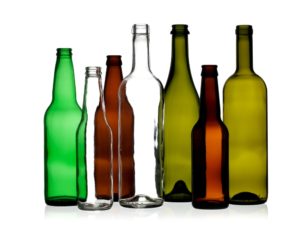 An Associated Recyclers of Wisconsin task force has released a report with recommendations on how to operate a successful glass recycling program within the state.
An Associated Recyclers of Wisconsin task force has released a report with recommendations on how to operate a successful glass recycling program within the state.
Wisconsin recovers high volumes of container glass, but it’s not always cost-effective, said the report. Wisconsin also has a ban on landfilling glass, which puts supply out of sync with demand.
“While both industry and society benefit from the use of recycled glass feedstock by reduced energy use and emissions, the cost to clean up three-mix glass (clear, brown and green) for recycling end Ideas to crack markets exceeds the price paid for it,” said the report.
The report comes as the rest of the country faces similar problems when it comes to glass recycling. Some communities are removing glass from their curbside programs because of contamination and market issues. The cost of transporting glass for recycling is expensive, but local end markets are often scarce. Some Wisconsin materials recovery facilities (MRFs) operators estimate transportation costs for delivery to secondary processors at $10-15 per ton for up to 100 miles, with costs continuing to increase above 100 miles, stated the report.
For MRFs, the report suggests investments in new equipment to ensure cleaner glass streams are worth the money. The report recommends negotiating with secondary processors and end-market buyers, as well as seeking grants from the Glass Packaging Institute (GPI), for assistance in these investments.
The report also said the industry should come together and draft specifications for the recycled material as it leaves the MRF and goes to a secondary processor. The report argues that glass that meets a certain specification will have a better chance of being purchased and remade into a new product.
According to the report, glass is the only major recycled commodity to not have a specification through the Institute of Scrap Recycling Industries (ISRI).
The report recognizes there are other uses for glass outside of containers. These uses, such as alternative daily cover at landfills, road base material and construction material, are underutilized in the state and the authors encourage local governments and MRF operators to develop partnerships for these uses.
The authors also suggest utilizing public-private partnerships to achieve some of the goals outlined in the report. For example, they recommend partnering with the Wisconsin Economic Development Corporation (WEDC) for investments in MRF technology as it relates to job creation.
Legislative and policy recommendations are also addressed in the document. The authors suggest pursuing a beverage container deposit law to increase the recovery of glass bottles. At the very least, the authors want a workable document from the Wisconsin Department of Natural Resources that summarizes codes and statutes related to recycling and beneficial use to better maximize glass end-market development. The task force also wants to see flexibility and waived fees when creating new pilot programs for non-bottle uses for recovered glass.
The authors come to the conclusion that the benefits of glass recycling outweigh the costs, and glass recycling can be made sustainable by implementing the report’s recommendations.



